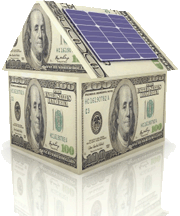
GTM Research indicates polysilicon costs could drop this year to 70 cents per watt, although producers are doing all they can to dampen that speculation.
The action is in new technologies that will drop costs far below that level on CIGS and thin films of all kinds.
REC Group of Norway, an integrated maker of polysilicon-based panels, says their Peak Energy series can deliver a return on investment in just 12 months with the highest performance in the industry.
Meanwhile gallium-arsenide cell producer Semprius, based on North Carolina, says its print-transfer technology has produced a module with an efficiency of 33.9% – nearly three times what current cells produce. Scaling that up, raising yields and dropping production costs, could have a profound impact on the market. (Siemens has a 16% stake in Semprius.)
It's not just higher performance, but lower cost achieved through production efficiency that is driving these markets forward. This means leadership in the space remains highly fluid.
And to this has to be added improvements in inverter technology, which can cut costs by increasing the amount of DC power produced by a cell that goes onto the AC grid, to system manufacturing costs, to channel costs, and to reductions in the cost of getting installations approved by government at all levels.
As I have said before these are early days in the solar industry. This is going to become the cheap energy no matter how much we drill baby drill. The only real question is whether America can capitalize on its advantages in research and capital delivery, not whether China plays “fair.”










